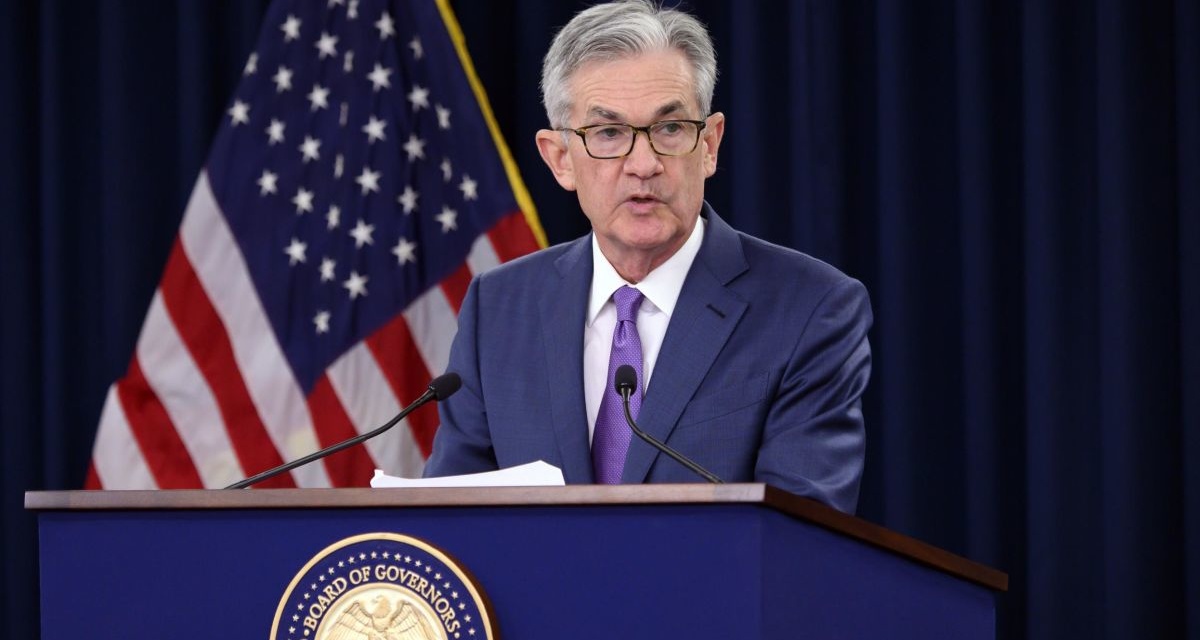With the US and much of the world facing an economic slowdown, the Federal Reserve has cut interest rates for the first time in 11 years — but is still being attacked by Donald Trump.
Fed chairman Jerome Powell announced the lowering of the rate by a quarter-point to just below 2.25% on Wednesday, saying the nation’s top bank would take all measures to “sustain the expansion” after the 2008 Great Recession.
But, wary of igniting inflation amid Trump’s record-setting Federal Government deficit, Powell said the decrease was a one-off: “Let me be clear. What I said was, it’s not the beginning of a long series of rate cuts.”
Trying to portray economic growth through the 2020 Presidential election — but facing the bursting of the bubble from the $1.5 trillion tax cuts in December 2017 — Trump has attacked Powell and the Fed for months, claiming that they were shackling the US and aiding supposed rivals like China and the European Union.
He continued on Wednesday after Powell’s statement, ignoring the mandate of the Fed’s independence from politics:
What the Market wanted to hear from Jay Powell and the Federal Reserve was that this was the beginning of a lengthy and aggressive rate-cutting cycle which would keep pace with China, The European Union and other countries around the world….
— Donald J. Trump (@realDonaldTrump) July 31, 2019
Trump insisted, “We are winning anyway, but I am certainly not getting much help from the Federal Reserve!”
Facing more political uncertainty ahead of September’s Fed meeting — as well as Trump’s ongoing trade wars with China and other countries — the Dow Jones industrial average lost 1.2% of its value, falling 334 points to 26,864.
Two of the Fed’s 10 members opposed the rate cut, and some leading economists agreed. Steven Ricchiuto, chief US economist at Mizuho Securities USA, said:
Cutting interest rates at this juncture will do only one thing: It will add to additional financial market inflation, which is the last thing in the world the Fed should be doing.
Powell did not mention Trump by name as he spoke of “weak global growth, trade policy uncertainty, and muted inflation”. But he implicitly challenged Trump’s tariffs-first approach:
There isn’t a lot of experience in responding to global trade tensions. So it is something that we haven’t faced before and that we are learning by doing. Trade-policy tensions nearly boiled over in May and June but now appear to have returned to a simmer.
In May, Trump raised tariffs on $250 billion of China products from 10% to 25%, and has threatened to impose the duty on the remaining $325 billion. The step collapsed US-China trade talks, which have struggled to resume, and China raised its tariffs to 25% on $110 billion — more than 90% of its imports from the US — of American goods.
See also Trump — My Tariffs Wiped Out The Entire Chinese Economy
Earlier this week Trump stepped away from his declaration that the tariffs would bring Chinese submission, saying there might not be a resolution before the November 2020 election.
The Federal Reserve has indicated that weakening business investment and declining manufacturing output are areas of concern.
To get a Fed which will accept his demand for aggressive rate cuts, despite the consequent inflation, Trump has nominated several candidates that will carry out the order. However, the Senate has yet to confirm any of them.

